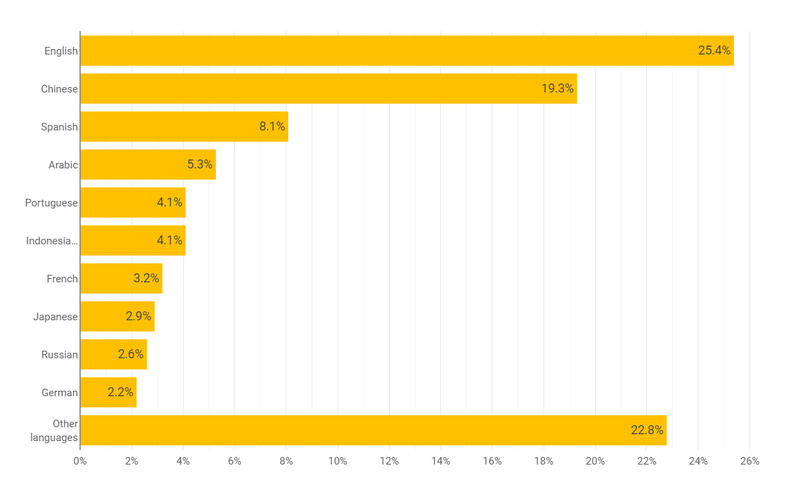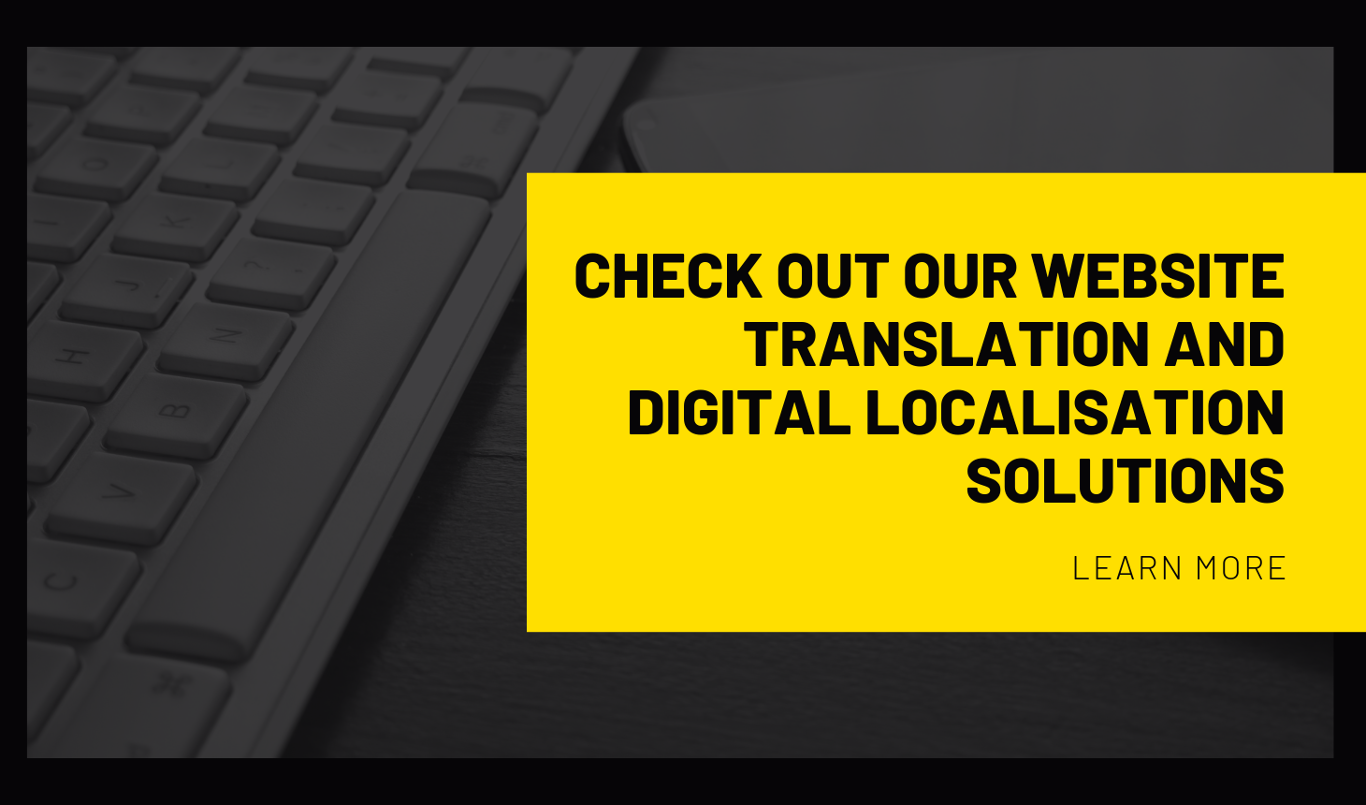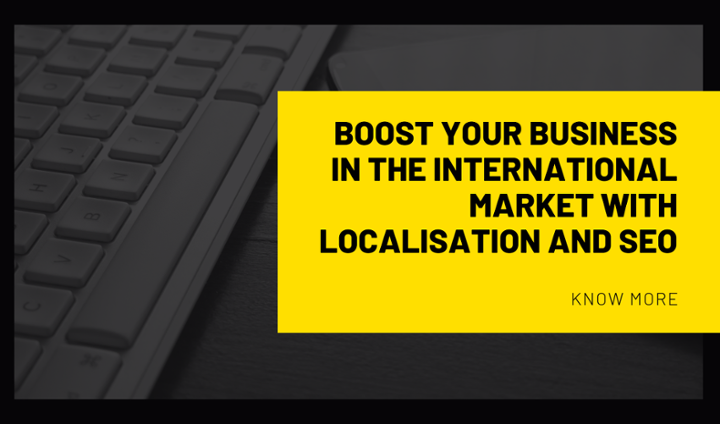There is no shortage of information to support the conclusion that the English language still assumes a dominant position today. Here's one of those figures: 55.7% of the world's registered websites are in English.
That's more than half of the worldwide web. Therefore, there is no doubt of the importance of requesting a translation company to translate and localise your website into English.
This may be true, but it is not the focus of this blog post. Numbers don't always portray reality as a whole, and the conclusion we reached when we started localising and translating websites is that it is not good enough for your website to only be translated into English..
Is translating into English enough? Of course not
Will English meet all your needs? The answer is no. We suggest you take a look at this number: 74.6%. This high percentage will accompany you through this article; it represents the number of internet users who don't use English in their web searches and prefer content in their own language.
To follow on from the previous paragraph, here are some more figures. According to the top ten most widely used languages on the internet, going beyond English will enable your company or organisation to access a market that represents 77.9% of global online sales.
Translation into several languages and globalisation
77.9% is a percentage that can't and must not be ignored; we suggest you join us in trying to see beyond English.
This doesn't mean you should deny the importance of English as an essential tool in many internationalisation strategies.
But, first of all, we would like to share an interesting article from Nimdzi: it is not enough for your website to be translated into English, because that would involve leaving out a large proportion of the planet's population. Some examples?
- Chinese: the language with the highest number of native speakers in the world, over half of which now have access to the internet.
- Spanish: whenever you think of Spanish, remember that it is the language with the second largest population of speakers in the United States. That's 52 million people, a gigantic section of the US market.
- Portuguese, alongside Arabic, Indonesian and Hindi, has a growing linguistic market. It is important to pay attention to all four of these languages.

The top 10 most used languages on the internet
Let's get back to the figure we started with - 77.9% - the percentage of speakers who don't have English as their first language.
Do you know how many Russian speakers "live" in the vast universe of the internet? More than 100 million. And do you know how many of them are able to access your website translated and localised into English? None.
Let's make it clear, 100 million potential clients is not a number that can be ignored, especially since, with a relatively minor investment, you could reach a good proportion of Russian speakers. Check out this example: with an investment of less than 1500 euros, you could welcome more than half a million clients. That's with a conversion rate of just 0.5%.
What is a conversion rate?
The conversion rate is the difference between users who simply visit the website and those who help you reach an important marketing goal, which we call conversion.
Conversions are website visits that hit a pre-determined target, such as filling in and sending off a form or making a purchase
Examples of conversions:
- Requests for quotes
- Online purchases
- E-book downloads
- Signing up to a newsletter
- Viewing quotes
- Accessing a landing page
Now that you know exactly what a conversion rate is, let's look at another example, one that is not only close geographically, but thanks to the internet, is even closer, just a few clicks away: Spanish, the third most used language on the internet, just behind English and Chinese.
We are referring to a potential market of over 300 million users, which could be turned into 1.5 million clients with an investment of just 1000 euros
Here, we are referring to a potential market of over 300 million users which could be turned into 1.5 million with an investment of just 1000 euros. If you decide to turn a blind eye, no Spanish speakers will know that your product exists.
One last number to clear up any doubts: for less than 13 thousand euros you can reach a market of 15 million potential clients. All you have to do is decide to have your website translated into 10 languages; the top 10 most widely used languages in the wonderful world of the internet. What are you waiting for?
This text was not written by a native English speaker, but by a language lover. However, all our language services are always provided by native speakers.
This text was not written by a native English speaker, but by a language lover. However, all our language services are always provided by native speakers.
ABOUT US
AP PORTUGAL - Tech Language Solutions is a Portuguese translation company certified by the ISO 17100 International Quality Standard. The company offers a wide range of language services, which include translation (TEP), post-editing machine translation (PEMT), transcription, desktop publishing and subtitling, voice talent, software and website localisation technology, SEO and consulting. It invests enthusiastically in the development of partnerships and cooperation anywhere in the world where your organization may need a partner for the African, Brazilian and European Portuguese language.
You can also follow us on social media Facebook, Twitter and Instagram.
Related Articles:
Language is more than words—it’s strategy. And when your organisation needs to expand...
Related Articles:
Choosing the right Portuguese translation company is a crucial step for any organisation...
Related Articles:
Patents protect innovations by granting exclusive rights to inventors. However, in a...




-2.jpeg)
.jpeg)

Comments